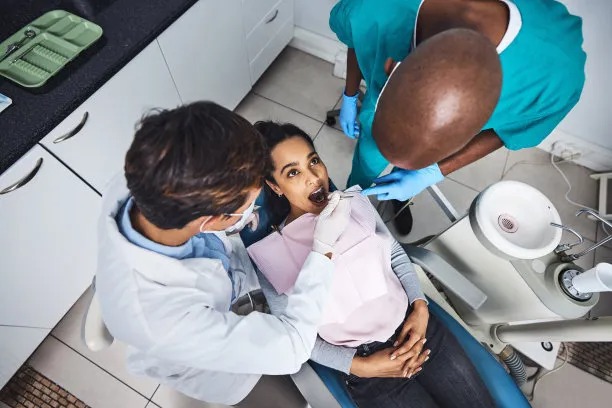A Comprehensive Guide to the Procedure and Recovery After Extracting a Tooth for Better Oral Health
Summary: Tooth extraction is a common dental procedure often necessary for better oral health. This article serves as a comprehensive guide detailing the extraction process, potential risks, and recovery steps. From understanding the reasons behind tooth extraction to post-procedure care, each section is designed to empower readers with knowledge. The guide includes preventative measures to take before the extraction and essential tips post-extraction to ensure a smooth recovery. Following these insights can lead to improved oral health and overall well-being.
1. Reasons for Tooth Extraction and Indications

Tooth extraction is often necessary for various dental issues, with the most common reason being the presence of severe tooth decay. When a tooth is extensively damaged and cannot be restored through treatments like fillings or crowns, extraction becomes the best option to eliminate infection and protect surrounding teeth.
Another common indication for extraction is overcrowding. Dentists may recommend removing one or more teeth to create adequate space for proper alignment, particularly before orthodontic treatments like braces. This can help in achieving a straighter smile and reducing dental complications in the future.
Additionally, impacted wisdom teeth are a frequent reason for extractions. These teeth, usually emerging in late adolescence or early adulthood, can cause pain, swelling, and infection if they do not have enough room to grow. Extraction is often advised to prevent complications and ensure oral health.
2. The Tooth Extraction Procedure Explained
The tooth extraction procedure is typically straightforward, beginning with a comprehensive examination by the dentist. This may involve X-rays to assess the tooths root structure and any potential complications. After the assessment, the dentist will explain the procedure and address any concerns the patient may have.
Once everything is in place, local anesthesia is administered to numb the area around the tooth. In some cases, sedation may be used to help patients relax. After the anesthesia takes effect, the dentist will carefully loosen the tooth using specialized instruments and ultimately remove it from the socket.
Post-extraction, the dentist will provide instructions for care, including advice on managing discomfort and the importance of monitoring for complications. Proper communication during this stage ensures patients feel comfortable and informed about what happens next.
3. Potential Risks and Complications
While tooth extraction is generally safe, there are potential risks and complications that patients should be aware of. One of the more common issues is dry socket, which occurs when the blood clot that forms in the tooth socket dislodges or fails to develop. This condition can lead to intense pain and may require additional treatment.
Infection is another possible risk following an extraction. Bacteria can enter the socket and lead to discomfort, swelling, and fever. Its crucial to follow post-operative care instructions diligently and maintain good oral hygiene to minimize this risk.
Additionally, nerve damage is an uncommon but severe complication that can occur, particularly with lower teeth. It may lead to sensations of tingling or numbness in the lip, chin, or tongue. Understanding these risks can help patients make informed decisions regarding their dental health.
4. Recovery Tips for Smooth Healing
Recovery after tooth extraction is a vital part of the process, and adhering to aftercare instructions can significantly enhance healing. Initially, patients should rest and take it easy, avoiding strenuous activities for at least 24 hours to minimize the risk of complications.
Managing discomfort is essential, and over-the-counter pain medications can be effective. Dentists may prescribe stronger pain relievers if needed, but it’s crucial to follow dosing guidelines meticulously. Applying ice packs to the outside of the cheek can also reduce swelling and discomfort in the initial 24 hours.
Maintaining a soft diet is recommended during the recovery phase, as hard or crunchy foods can disturb the extraction site. Staying hydrated and gradually reintroducing normal foods as healing progresses can aid in recovery. Finally, regular check-ups with the dentist following the procedure allow for monitoring of healing and prompt addressing of any emerging issues.
Summary:
In summary, understanding the tooth extraction process, potential risks, and recovery tips is crucial for protecting ones oral health. By being well-informed, patients can navigate their dental procedures with confidence and ensure a smooth healing journey. Recognizing reasons for extraction, knowing what to expect during the procedure, understanding risks, and following recovery tips leads to better dental outcomes.
This article is compiled by Vickong Dental and the content is for reference only.


